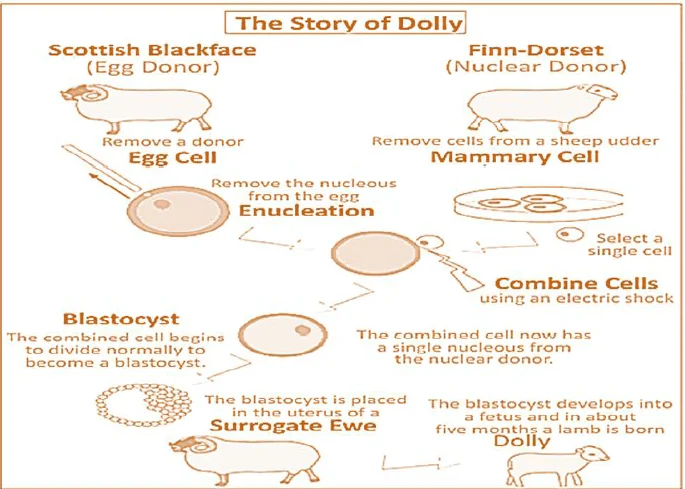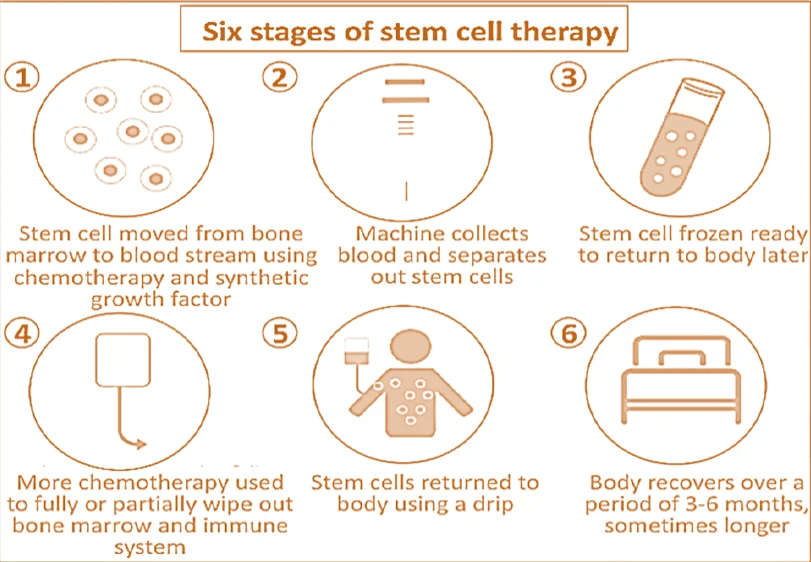![]() June 4, 2024
June 4, 2024
![]() 1530
1530
![]() 0
0
In the realm of biotechnology, breakthroughs like somatic cell nuclear transfer (SCNT) and the cloning of Dolly the sheep have reshaped our understanding of genetic engineering. Recent advancements, such as three-parent babies and stem cell therapy, hold promise for regenerative medicine.
About: Somatic cell nuclear transfer (SCNT), technique in which the nucleus of a somatic (body) cell is transferred to the cytoplasm of an enucleated egg (an egg that has had its own nucleus removed).
About: Dolly was cloned from a cell taken from the mammary gland of a six-year-old Finn Dorset sheep and an egg cell taken from a Scottish Blackface sheep.

Fig: Cloning Of Dolly Sheep
About: Techniques to create ‘three-parent babies’ seek to offer mothers a way to have a child without passing on metabolic diseases caused by faulty mitochondria.


Fig: Stages of Stem Cell Therapy
| Must Read | |
| Current Affairs | Editorial Analysis |
| Upsc Notes | Upsc Blogs |
| NCERT Notes | Free Main Answer Writing |
These advancements in biotechnology and medical research offer hope for addressing complex health challenges. Through ongoing innovation, we are unlocking the potential of regenerative medicine to improve human health and well-being.
| Related Articles | |
| Somatic Genetic Variants | Stem Cell Therapy |
| Biotechnology Applications | Recombinant DNA: Definition, Application, Tools & Process |
<div class="new-fform">
</div>
Latest Comments